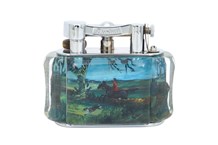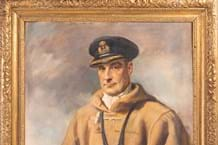Top lot was an 18th century German compound box-type microscope, c.1775, which sold for £32,000 to a private collector. It was signed by G.F. Brander, the pre-eminent German precision instrument maker of the 18th century, who made only a handful of this type of microscope. A smaller, less sophisticated example is in the Mathematisch-Physikalischer Salon of the Staatliche Kunstsammlungen, Dresden.
A mid-19th century horizontal compound monocular microscope by the distinguished French maker Charles Chevalier attracted much attention, selling to a private buyer for £20,000, well over the high estimate of £12,000. Such instruments are rare and bidders were prepared to overlook some areas of worn lacquer and a few missing accessories to own this handsome and fascinating object.
Astrolabes have a beauty even to laymen and are in such short supply that there is a regularly updated international checklist of their whereabouts. An example offered by Christie’s, an unsigned Maghribi astrolabe dated to the 18th or early 19th century, was hitherto unrecorded and all the components were original. Estimated at £15,000-20,000, it sold to a dealer for £22,000.
In the surveying instruments section, rarity and beauty also excited fierce bidding in the case of a superbly engraved 17th century graphometer, signed Maretz à Aix, a town with no strong tradition of instrument making. The maker was probably Jacques Maretz, a professor of mathematics, geometer and engraver. The exquisitely engraved armorials and trophies on the brass plate, as well as the gold-tooled, crimson leather box, suggest that it was made as a presentation piece for some important civic occasion. It caught the imagination of collectors and sold for £19,000 against an estimate of £8000-12,000.
An elegant four-draw, shagreen-covered telescope by George Adams, stamped with his name and Fleet Street address, was made the more interesting by the inclusion on the smallest tube of a piece of paper signed and dated N98 Jan 25, 1752 Geo: Adams and sold for £4500. An example of the Edinburgh instrument maker John Clark’s ‘new improved pocket microscope’, invented in 1773, was dated 1775, the only example of this date known. It stirred a collector to pay £13,000, more than double high estimate.
The onward march of technology
Christie’s South Kensington (19.5/12% buyer’s premium) hold three Scientific Instruments sale a year but reserve the spring sale for a restricted number of high-quality objects. Tom Newth, head of the department, reports the market picking up in the last six months, with strong competition for microscopes and Islamic astronomical instruments.




